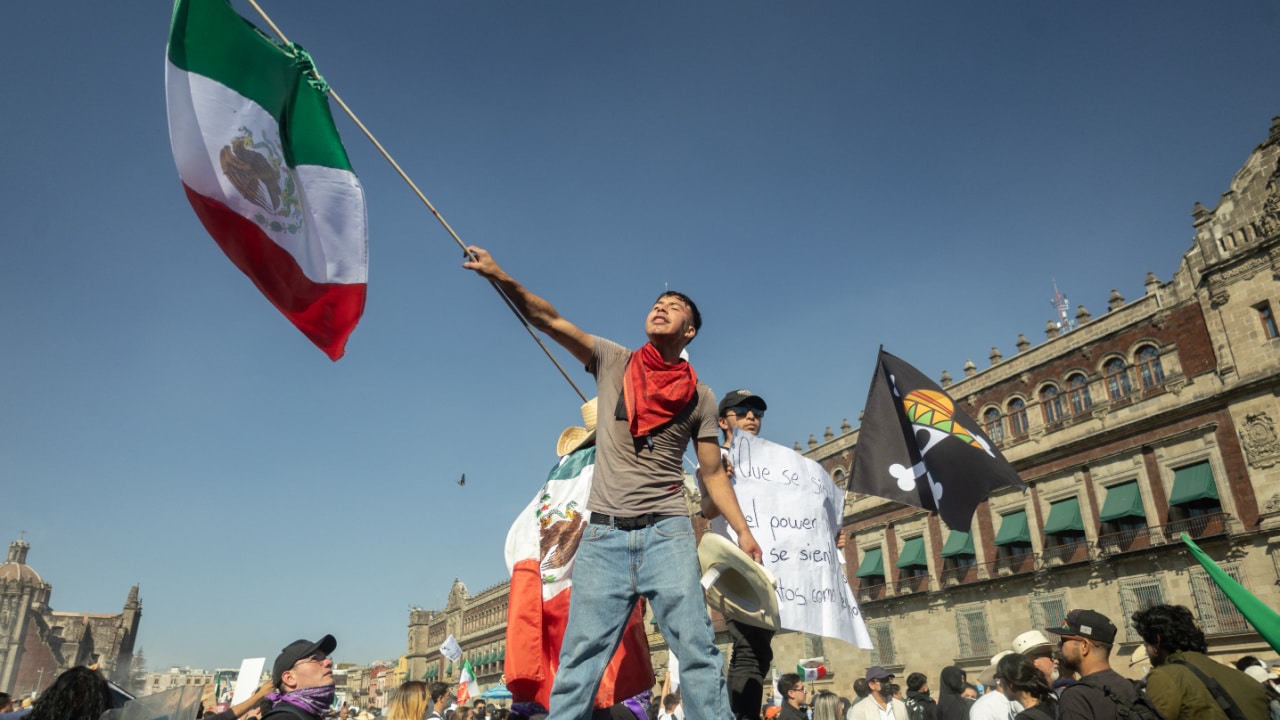Latinos Are Leaning Into Art, Community, and Collective Action As Protests Against Immigration Raids Continue
Protesting in 2025 is more than coming together to march. Throughout the year, activists, community organizers, and concerned citizens have rallied together to send a message to the Trump administration. The protests have varied in their approach, but the message is the same: stop arresting our neighbors. People used creative ways to bring attention to what is happening with immigration raids through dance, art, and neighborhood patrols.
Latino art became a major part of protests this year
“Am I Next?” is a protest happening throughout Los Angeles. Funded by The California Community Foundation, the protest is using light-up signs on iconic buildings in downtown LA. The awareness campaign is using the faces of prominent voices critical of the Trump administration’s immigration raids.
One of the names behind the “Am I Next?” protest is Edward James Olmos. He got involved after comparing the unrest in LA this summer to the civil unrest that gripped the city in 1992.
“I did a lot of work during that period of time in the community to help bring it back,” Olmos told LAist about the 1992 unrest and what is happening now. “But this is brutal because it’s just beginning. People don’t understand. They think, ‘Oh, well, you know, they came in here, they did their thing, and now they left.’ No, it’s just beginning.”
High school students in North Carolina used traditional dance
North Carolina was targeted with mass immigration raids this month. Students from colleges and high schools joined in on protests across the state against the raids. There were protests and marches in the Tar Heel State with North Carolinians who want to protect their neighbors.
One group of high school students took a different route in their own protest. Adorned with native clothing, students took to the streets in Durham and danced. This kind of cultural protest is a testament to the enduring pride that Latinos have in their heritage in the face of unrelenting threats.
“I’m here for my mom. I’m here for her, for my brother, for my family who can’t be here today, who aren’t working,” one student told CBS17. “We don’t have groceries at home. We don’t have money saved up.”
Neighborhoods created ICE patrols
Nothing says the Latino community quite like banding together and helping each other. Únion del Barrio is a group of volunteers who cover different neighborhoods throughout LA and part of Southern California. The team coordinates to share information about ICE activity to alert their neighbors.
The team uses social media to share videos and photos of activity and vehicles to warn people. The social media posts go viral and quickly help people seek shelter when immigration raids are unfolding. They meet near Terminal Island, an artificial island that houses a federal prison. From there, the team gets an idea of what vehicles are leaving the staging area, making it easier to follow them.
“We’re tripling down on our patrols,” Chavo Romero, a volunteer with Únion del Barrio, told The Guardian. “The whole order was to end racial profiling. But the restraining order doesn’t say stop the deportation and detention. That will never stop,” he added. “It’s a multibillion-dollar industry that needs to keep going.”
There have been protests and demonstrations across the country that used different tactics to get the message across. People wore inflatable outfits to dance in front of agents in Portland, Oregon. A Home Depot in Monrovia, California, was flooded with protesters buying and returning ice scrapers to slow down business. Despite the method, Latinos and allies have spent this year pushing back in American streets this year.




